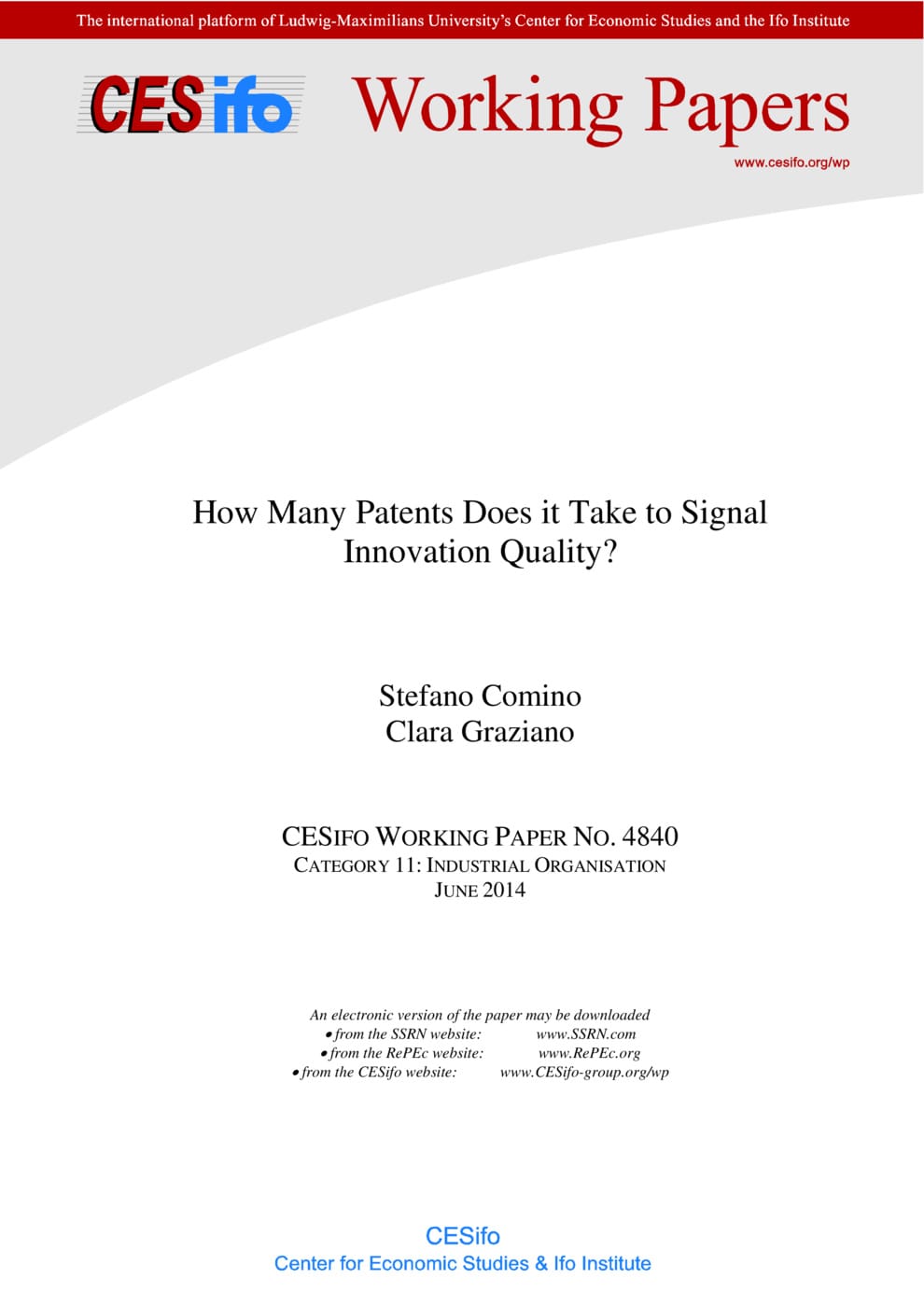How Many Patents Does it Take to Signal Innovation Quality?
CESifo, Munich, 2014
CESifo Working Paper No. 4840

In this paper, we offer a novel explanation to the surge in patenting bserved during the last years. With low patentability standards at PTOs (Patent and Trademark Offices awarding so-called bad patents), not only “false innovators” have the chance of being granted patents but also, and more interestingly, “true innovators” are forced to patent more intensively trying to signal their type; however, if they are liquidity constrained, true innovators may fail to separate and this fact reduces the incentives to exert effort in R&D activities. Then, drawing on the signaling role of patents highlighted by the model, we investigate some of the proposals that have been put forward in order to mitigate the bad patents problem. We provide an intuitive condition under which a tightening of the patentability standards (“raising the bar”) reduces the distortions caused by bad patents. Moreover, we show that introducing a two-tiered patent system is unlikely to improve market outcomes.
Industrial Organisation